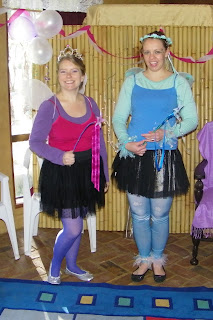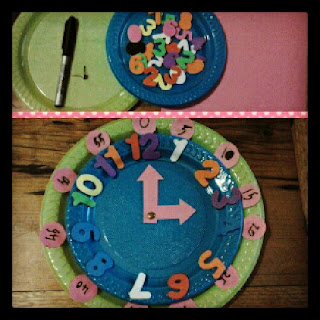With only a few days left of the school holidays, you might be running short of ideas and trying to think of some activities to occupy the kids, or those overseas readers might just be looking for some indoor activities for a rainy day. So why not get crafty?
I have yet to meet any kids who don’t love arts and crafts, getting in there and making things with their hands, putting their personal touches on items that they have created, letting their imaginations run wild with ideas for decorating and designing pieces that they can display and keep for years to come.
But have you ever thought about adding a “learning” twist to your arts & crafts? Here are 7 fabulous fun ideas for art & craft time at your place that are really simple to do using things you would generally find in any child’s home (no need to go out and buy expensive supplies, but you can get extras from your local discount store if you like).
Coins & Pouch (All Ages)
Great for playing shops, you can set up your own mini mart in the kitchen and enjoy watching the kids learn to count, add and subtract playing with their home made coins.
Paint bottle tops with gold or silver spray paint and to write numbers on the coins in permanent marker (plastic milk caps work well, as do metal bottle caps when flattened with a mallet).Use numbers relevant to your child’s needs, e.g. numbers 1-10, 1-50, or currency such as cents and dollars.
For a pouch, use an old clean handkerchief, cut it into a circle and either sew a seam around the edge, or cut some nicks around the perimeter and thread some ribbon or string through. Place the coins inside, pull tight and tie to close.
Board Games (Upper Primary)
This is a great one that can keep the kids occupied for hours, you may have even done this yourself at school.
Grab a large piece of cardboard and have your child draw the path around the board with individual squares adding snakes or ladders, perhaps “pick up a card” squares, “go back” squares, “miss a turn”, or whatever type of spaces you can think of based on your favourite games. Use small items around the house as game pieces such as cotton reels, lego pieces, small action figurines or bottle caps. And use small pieces of card to create the “pick up cards” with questions, challenges, dares, or any other activities that the player must complete to make their next move.
Make a cube dice from paper & glue (search google for patterns), and write the rules on an A4 sheet of paper.
Once they have their finished creation, sit down and enjoy some fun playing their home made board game that has helped them practice their thinking, logic, reading and spelling, hand writing and design & creativity skills.
Learning Clock (Pre School to Primary)
For this one you will need two different sized disposable plates, a split pin, some glue and some coloured card to cut out numbers and hands.
Punch a hole through the centre of both plates and cut out your hands, pin them all together with the split pin and ensure the hole is big enough for your hands to turn.
On the inside plate glue on your regular clock numbers 1 – 12, and on the outside plate glue on the minute numbers 0 – 55 (showing how each number on the clock represents a number of minutes, e.g. 3 represents 15 minutes on the clock.
Decorate the clock with whatever you have in your art supplies kit, glitter, feathers, googly eyes, paints etc. and spend time playing with the clock together.
Write & Illustrate a Book
This one is really easy, but really effective to get the kids involved in story telling and letting their imagination take over. In story books, anything is possible!
Staple a few sheets of A4 paper together, with some coloured pieces on the outside for a cover and sit the kids down with some pens, pencils, felt tipped pens, crayons or whatever else you think they’ll need, and let them create their own story book!
This will be a treasure for years to come, you can read it together and proudly keep it on display in your book shelf for visitors to admire.
Having difficulty getting started? Try some ideas to start the wheels turning in their minds like fairies, pirates, favourite cartoon characters,
Letter / Word Blocks
This is where you get to recycle some of your old children’s old toys. Using lego, duplo, wooden blocks or whatever other items you can find in the toy box, glue on coloured card that has letters or words written on them.
Depending on your child’s needs you might choose to use the alphabet to learn the letters and sounds, or write difficult words on the cards. Use the blocks to then play games such as floor scrabble, or make sentences with your words, or I Spy.
Again, get creative, use leaves or petals glued onto card to make the words, finger paint them, or cut out letters from magazines. This is a fun way to make old toys new again.
Posters
Everybody loves to make a poster of something they like! So why not make posters about things your children might be struggling with. Create their own times tables poster for the back of the toilet door or the backseat of the car, create a poster of shapes or colours for younger kids. Paint a picture of them in the centre and surround with positive adjectives that describe them or make a collage of a subject they have researched from the newspaper or a magazine.
Use paints, glitter, glue, feathers, items from nature, coloured markers, colours cut outs, magazines, stencils, ribbons, wool, wrapping paper, stamps, or anything else you can find about the house for decorating and creating.
Greeting Cards / Post Cards
Christmas is fast approaching and greeting card season will soon begin! So spend time these holidays making your own Christmas cards with the kids, or perhaps they could make cards for their friends’ birthday parties, or their grandparents wedding anniversary. If you are going away on vacation make your own postcards.
This activity is great fun, but encourages children to use their best handwriting, and focus on their spelling. It also helps them learn about locations and addresses when you pop them in the post.
For Christmas cards you might like to use lots of glitter, sparkly stick on decorations and metallic pens, but you can also use every day household items like tin foil to cut out shapes, paper lace doilies, ribbons, or cut outs from left over wrapping paper.
Whatever you do in arts and crafts, it can be lots of fun! Get messy, get creative, make something to learn and something to love!
Post your ideas in the comments below, or share pics with us of your own creations. We love to hear from our readers.
Happy Learning!





